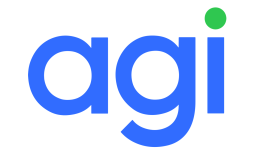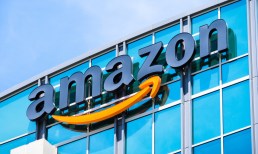Why Reopening The US Economy Should Be About Reinventing It

Never has one letter of the alphabet been such a hot topic of conversation.
That letter — V — has become the proxy for how some describe the shape of the economic recovery as businesses begin to reopen here in the U.S. and on a global scale, and as the public health threat of COVID-19 recedes. The letter V is emblematic of the sharp drop as a result of the mandated business lockdowns and #stayathome restrictions imposed by COVID-19 — and then the sharp rise back up once those lockdowns and restrictions are removed.
It may also be wishful thinking.
The challenges of reigniting the economy after nearly two months of a near-total shutdown of the physical world, and probably a longer partial shutdown, is a lot like the ones faced by an entrepreneur with a platform business that she wants to ignite and scale.
It requires identifying the key stakeholders, understanding their interdependencies and then devising a strategy to build critical mass on all sides while aligning supply with demand.
It requires a realistic appraisal of the frictions associated with stakeholder interactions, how businesses will reduce or eliminate them and which stakeholder group is most critical to getting the flywheel moving.
Advertisement: Scroll to Continue
Building critical mass is then about aligning incentives across all stakeholders.
Sound familiar?
This is the problem that platform businesses face at birth — some crack them, and many don’t. We know a lot about the strategies for igniting platforms. As it turns out, these same principles provide insights into how to get the economy moving again.
Getting to critical mass is perhaps the most important platform dynamic to crack. Getting that right is the difference between a platform that ignites and scales or crashes and burns – or worse yet, never gets off the ground at all.
That will be true for businesses that are generally coming out of a very long hibernation.
What Platform Dynamics Have To Do With Reopening The Economy
Reopening the economy in the U.S. — and everywhere in the world — requires building critical mass across key stakeholders:
Businesses that supply goods and services to customers;
The employees of those businesses who are needed to deliver those goods and services; and
The customers who buy the goods and services from those businesses.
The buyers are key, of course, since they drive demand and sales.
But so, too, is having a critical mass of businesses with stuff they can buy — and enough of a workforce for those businesses to support the delivery of that demand.
The total and simultaneous shutdown of the economy, along with the public health threat that COVID-19 represents, has introduced one very unusual platform friction that makes igniting the economy tricky, and therefore renders a V-shaped recovery unlikely — at least given how many define what it means to “reopen.”
Businesses must be convinced that demand will be sufficient enough to rehire their workforce and cover their costs before they run out of cash.
The workforce must be convinced that it’s safe to return to work — from both a job security and public health standpoint.
And the consumer — who today is eight times more afraid of dying from COVID than losing their jobs or their nest eggs as a result of it — must be rock-solid convinced that the rewards of resuming their physical activities are greater than (a) the frictions imposed when the economy partially reopens (b) their perceived individual health risks when reentering and (c) the rewards of continuing to do many of their day-to-day activities in a largely digital world that has worked pretty well for them so far.
The Long Road To Reopening
Maybe you think the consumer’s fears of COVID-19 are overblown, even irrational. Maybe you think the consumer doesn’t have all of the right facts on which to make their decisions and is basing them on incomplete data.
Maybe that’s true — but, as the saying goes, the customer is always right, even when they aren’t.
Our national survey of consumers, more than 10,000 now, has found consistently, week after week, that the only thing that will give the customer real confidence about getting back to their daily routines is the availability of a vaccine that will make alleviate their fear of dying. If anything, that sentiment has only gotten stronger each and every time we go into the field and ask — which is every 10 days.
That fear of getting sick, or worse, influences their behaviors and their decisions, in part because COVID-19 has gotten up close and personal for a large majority of the U.S. population over the last seven weeks. Today, about a quarter (24.5 percent) of the consumers we studied personally know someone who has had the virus. More than 22 percent of Main Street SMBs have had someone in their workforce test positive.
The latest reports, published just yesterday in the Financial Times — which show that the global death toll is likely underreported by 60 percent, coupled with the latest U.S. death toll that stands at nearly 55,000 (as of April 26) — is unlikely to make consumers feel any less vulnerable. And then there are the daily obituaries of the famous, and not-so-famous, people that make death by COVID-19 most salient.
That makes the school of thought that reopening the economy is as simple as doing a copy/paste from February to the end of May or June or July or whenever, and that things will pick up where they left off, is misguided.
It’s also dangerous for businesses to think that it will.
How Consumers Have Changed
Readers of these pages have had a weekly, real-time ringside seat to the shifts in U.S. consumer and Main Street business behavior over the last seven weeks, as PYMNTS has studied a national sample of now more than 10,000 consumers and nearly 1,200 Main Street SMBs every 10 days. We’ve had a unique insight into the psyche of the American consumer and the Main Street business owner as the pandemic has progressed, as more information about its public health implications have been made known and as consumers have shifted their behaviors as a result.
That has contributed to perhaps one of the biggest “aha moments” of our work so far — something we believe is an important input into what it means to “reopen” the economy, and why our thinking must now shift to how we both reopen and reinvent the businesses that will power its recovery.
That insight is that consumers and businesses now think it will take much, much longer for them to resume their pre-COVID daily activities — going to work, taking business or family trips, going to the store, going to the gym, going out to eat or going to a sporting event or concert.
And their timelines seem to extend for every 10 days that we conduct our research.
In early March, most consumers measured the duration of the pandemic in terms of weeks, with most thinking that by the end of March or early April, things would return to normal.
Ten days ago, that duration increased by a factor of six — to six months, on top of the two they have already been in lockdown.
In other words, for most of 2020. And that’s assuming that kids go back to school in the fall.
In mid-March, Main Street SMBs thought the duration of the pandemic was a month, maybe two. Last week, they said it would take 199 more days for their businesses to recover beyond the two months that most have been largely shut down. Restaurants and retailers say it will take even longer, at 205 and 224 days, respectively.
In other words, most of the year. That’s against a backdrop where one in four businesses don’t think they will make it — and with four in 10 still not so sure. The longer the duration of the pandemic, and the longer it takes for consumer demand to come back, the less sure they are about reopening, rehiring their workforce or even opening at all.
It has all the makings of the classic platform death spiral, now applied to the physical world as businesses contemplate their future odds of survival.
At the same time, over those seven weeks, we’ve seen consumers shift their behaviors – some rather dramatically — as #stayathome has become their daily reality.
Almost four times more consumers now shop online for groceries – from 4 percent to 15 percent in just the last seven weeks, with consumers who shop using digital channels favoring both delivery and curbside pickup as an alternative to going into physical stores.
Three times the number of consumers now shop online for things other than groceries, even though their spending across the board has declined. From home, and using one of their many connected devices, consumers can easily find what they want at the best price; establish an account; use their digital wallet or card on file to pay, or check out as a guest; and then have the product shipped to their homes.
It’s the ultimate no-touch payments and commerce experience, in an environment where no-touch is the most sought-after experience.
Knock, Knock. Who’s There? Nobody — Yet.
The truth, though, is that consumers didn’t need the state governments to lock down the economy before they took it upon themselves to practice social distancing and retreat from their largely physical worlds.
On March 6 — a full 10 days before most state governments told its citizens to #stayathome — the fear of contagion had them already starting to do it anyway. Our first study of 2,000 U.S. consumers showed that 36 percent of consumers were eating in restaurants less, 30 percent were shopping less in stores, 45 percent were traveling less for work, 37 percent were going to movies and concerts less often, and 12 percent of people with jobs were working in the office less.
Today, we see consumers now feathering their nests as movie nights and game nights are more frequent and working and studying from home has become a necessity. They’re buying pots and pans and kitchen appliances, as they have both the time and the interest to prepare food instead of ordering out for delivery.
Right now, and probably for some time to come, home is where the heart and the health is for the majority of consumers.
In just seven weeks, the shifts consumers have made — first out of choice, then by necessity and now out of habit — have become, for the majority, their new routine.
Roughly half of consumers (48 percent) report that digital behaviors will stick across many of the categories we studied — shopping, eating, working, traveling and spending their leisure
Reinvent, Then Reopen
Unlike the 2008 financial crisis, COVID-19 has put the consumer’s personal health at risk due to the highly contagious nature of the virus, their personal finances at risk given the extreme stock market decline, and their paychecks at risk given the shutdown of the economy and the business uncertainty that has followed. Even if real estate values don’t decline, homeowners are increasingly sitting on illiquid assets, with fewer buyers, skittish mortgage lenders and not a lot of extra cash.
Reigniting the economy must mean addressing those fears, those realities and the attendant concerns raised by businesses, consumers and the workforce about their future.
That may not be easy — and it is unlikely to be immediate.
With administration economists now admitting that unemployment will reach “Depression-like” levels, too many consumers have already lost their jobs or live in fear of losing them, have taken a significant wage hit or live in fear of being asked to take one, or have had to ask for rent, mortgage or credit card payment abatement since they can’t pay their bills. Sixty percent of U.S. consumers now report living paycheck to paycheck, with 59 percent of them now less than a month from having to dip into savings to pay bills.
Consumers are tightening their purse strings and spending less overall for anything they don’t deem essential. Spending, and therefore the demand for most anything other than essentials, is down — even for the affluent. All consumers today are simply being cautious, regardless of the size of their bank accounts.
Downtowns have become ghost towns as consumers watch their favorite stores, restaurants, salons and other businesses shutter, or know business owners who are in distress — and it’s sobering. Wearing a mask outside has become a necessary part of a consumer’s wardrobe over fears of contagion — and it’s scary.
Recognizing this, governments all over the world have begun to talk about reopening plans, with some even taking steps to relax their restrictions to allow some storefronts to reopen. Many of those shop owners still haven’t, even though they can.
The consumers who happen to venture out are few and far between, and continue to keep their social distance and wear masks. More of them, though, just sit it out — some over fears that it still isn’t safe, and some over the reopening requirements that have introduced more friction into the experience than they are willing to accept.
Particularly given the digital substitutes now available to them.
As it turns out, not many people want to stick their fingers into bowling balls at the bowling alley or their feet into rental bowling shoes right now. Or even have their hair done, despite the many reports of hair crises that have emerged over these last seven weeks, if the tradeoff is being attended to by stylists wearing the equivalent of PPE, and only after signing a sworn statement that they are not sick.
The experience of being served in a restaurant where waiters are toting plastic menus and wearing surgical masks and rubber gloves, and where diners are getting their temperatures checked before entering, wearing masks and gloves, sitting 6 feet apart from one another, and receiving little bags in which to put their masks while they eat isn’t all that appetizing, either — as much as consumers want to go out to eat at their favorite spots.
That’s why reopening the economy must be about five things:
Rethinking the now-daily routines of consumers: The ways they work, shop, pay, eat, travel, play and stay healthy have all changed — and so has what it means for them to feel safe and reengage.
Understanding the frictions that will be required for consumers to reengage, how willing they will be to tolerate them — and for how long — based on the nature of the activity. The more essential the activity, the more friction — provided the consumer hasn’t found a suitable digital substitute over the last seven weeks that works just as well, or better.
Resisting the urge to go back to where things were in February, and instead use this experience and the new digital habits consumers have formed over these last seven weeks to create and power a new, dynamic, connected economy for consumers, businesses and the workforces tasked with delivering it.
Understanding the frictions consumers will require at reopening, and how willing they’ll be to tolerate them — and for how long — given how essential they deem the nature of the activity. And, more importantly, which frictions they won’t tolerate, because they’ve found suitable digital substitutes over the last seven weeks that work just fine.
Resisting the urge to think about how to get things back to the way they were — and instead focusing on how we can use this experience, and the new digital habits consumers have formed over these last few weeks, to create and power a dynamic, connected economy for the consumer, the business and the workforce tasked with delivering it.
What’s Next
I have no doubt that we will see innovators use technology to find new ways to fulfill the fundamental mission of the connected economy: to bring commerce to the consumer, instead of the consumer having to chase it down.
I believe we will see forward-looking businesses really blur the online and offline worlds by seizing the potential of hyper-personalizing the hyper-local experiences offered by businesses that now largely operate in the physical world.
I think we will see forward-looking businesses seize the potential of hyper-personalizing the hyper-local experiences offered by businesses that largely operate in the physical world. We will see platforms democratize logistics, artificial intelligence (AI) and payments choice so that those businesses can flex, as consumers shift from physical venues that require them to interact with lots of consumers they don’t know to the experiences they can now have at home with their family and friends — and to do so at scale. The movies, not the movie theaters. The fitness, not the fitness studios. The shopping, not the shop. The on-the-couch fan, not in-the-stands, reveler. The restaurant food without the restaurant.
Until they feel safe — or until that becomes their new daily routine.
Just like the early days of the web, when the smart money followed those who saw it as much more than a place to upload brochures, we will see creative, resilient entrepreneurs using this time to reimage their businesses with a mostly-digital consumer in mind.
Their workforces will look different, and their shops may look and operate differently, too. But they’ll have customers. And they’ll get critical mass.
And they’ll have every potential to survive and thrive as the economy reopens, powered by the businesses that see the great potential in reinventing it.



